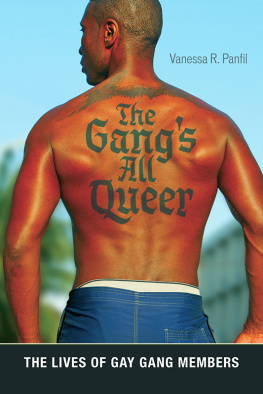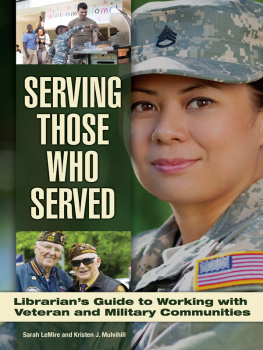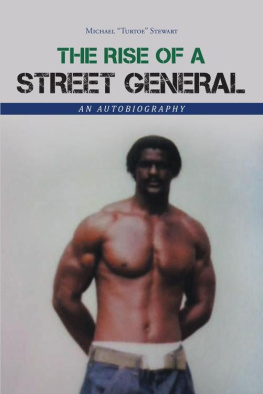Praise for Gangs and the Military
Carter F. Smith breaks down the theory, types, and definition of gangs, bikers, and terrorists and how they impact the community and workforce. He offers a fascinating historical analysis of gangs through the nations war years, illuminating how gang culture, in some form, has plagued government authorities since the postRevolutionary War era in much the same manner that they plague investigators and communities today. Gangs and the Military: Gangsters, Bikers, and Terrorists with Military Training has greatly expanded the knowledge of gang investigators with this seminal work. It is a gem! Ron Stallworth, SGT, Ret., former gang intelligence coordinator, Utah Department of Public Safety
For anyone interested in understanding the insidious nature of criminal gang and extremist infiltration of the armed forces in America, Gangs and the Military is a must-read. The author not only provides a comprehensive and thorough examination of the history of gangs in the U.S., but also sets forth clearly articulated evidence of the infiltration of the gangster mentality and its associated criminal influence within our nation's military branches. Christopher Grant , national Native American gang specialistSmith spotted the problem of gang members with military training years ago; here is the evidence! The book is well researched, very comprehensive, and proven. A useful contribution. Well done! Simon Harding, lecturer at Middlesex University; author of The Street Casino: Survival in Violent Street Gangs This is a very fascinating and eye-opening book! The interesting part of gang investigations is that there are always new things to learn. Gangs are not a new phenomenon, and this book helps highlight that. This problem is not going away, and hopefully this book will help awaken some who still hide their heads in the sand and hope that gangs will just go away. Jim Quick, president, Tennessee Gang Investigators Association
Smith has provided an excellent examination of issues often missed and more often misunderstood. He provides the reader with a fantastic historical perspective, which offers a wonderful lead into an analysis of the issues of military training and service for gang members. These are extremely important cautionary notes that the reader should take the time to examine in detail before considering the consequences of having military-trained gang members moving back to civilian communities. In this book, Smith looks at some of the key questions arising from gang studies in the twenty-first century. Andy Bain, PhD, director of criminal justice studies, University of Mount Union, Ohio; co-author of Outlaw Motorcycle Gangs: A Theoretical Perspective
Smith has created a book that is exceptional for those in law enforcement, military, and in the civilian community. His extensive knowledge in the field of gangs shines through in his literature and teachings. The information contained in this book covers a wide variety of topics, from a historical introduction to early gangs to showing how various wars have impacted and changed the gang culture, as well as updated information on modern-day street gangs. This well-written book is a definite must-read! Dave Harris, Boise Police Department Gang Unit; vice president, Northwest Gang Investigators Association
Gangs and the Military
Gangsters, Bikers, and Terrorists with Military Training
Carter F. Smith
Rowman & Littlefield
Lanham Boulder New York London
Published by Rowman & Littlefield
A wholly owned subsidiary of The Rowman & Littlefield Publishing Group, Inc.
4501 Forbes Boulevard, Suite 200, Lanham, Maryland 20706
www.rowman.com
Unit A, Whitacre Mews, 26-34 Stannary Street, London SE11 4AB
Copyright 2017 by Rowman & Littlefield
All rights reserved . No part of this book may be reproduced in any form or by any electronic or mechanical means, including information storage and retrieval systems, without written permission from the publisher, except by a reviewer who may quote passages in a review.
British Library Cataloguing in Publication Information Available
Library of Congress Cataloging-in-Publication Data
Names: Smith, Carter F., author.
Title: Gangs and the military : gangsters, bikers, and terrorists with military training / Carter F. Smith.
Description: Lanham : Rowman & Littlefield, [2017] | Includes index. |Description based on print version record and CIP data provided bypublisher; resource not viewed.
Identifiers: LCCN 2017006831 (print) | LCCN 2017013374 (ebook) | ISBN9781442275171 (electronic) | ISBN 9781442275164 (cloth : alk. paper)
Subjects: LCSH: Gang membersUnited States. | VeteransUnited States. |SoldiersUnited States.
Classification: LCC HV6439.U5 (ebook) | LCC HV6439.U5 S613 2017 (print) | DDC364.106/6086970973dc23
LC record available at https://lccn.loc.gov/2017006831
 The paper used in this publication meets the minimum requirements of American National Standard for Information SciencesPermanence of Paper for Printed Library Materials, ANSI/NISO Z39.48-1992.
The paper used in this publication meets the minimum requirements of American National Standard for Information SciencesPermanence of Paper for Printed Library Materials, ANSI/NISO Z39.48-1992.
Printed in the United States of America
Foreword
The U.S. military has a long history of serving America by protecting the countrys citizens. Specialized and modernized training, a military style of discipline, and a focus on national and international security has allowed Americas fighting forces to become the most formidable, well-trained military in the world.
Many young men and women have honored the millions of civilians with their military service. But that is the point. The ranks of our military have come from society. Even with all the discipline and leadership, the ranks of our military still represent a slice of Americas general population.
Along with that cohort comes the issues and problems associated with society in general, albeit probably at a lower rate; but nevertheless they exist. This book examines those issues and offers some simple, yet effective strategies in dealing with gangs within our military. I know there have been media and news specials highlighting certain instances where gang members are also active duty military members. It is easy to suggest that gangs in the U.S. military are a severe and present danger. In fact, they are not. However, they do, and continue to disrupt commands to the contrary, prey on children of active duty members and typically do not abandon, or give up, their gang affiliation while on active duty.
Gangs have even made their presence known on overseas military bases and on board military vessels. Interestingly, in 2007, a Pentagon official commented that gangs are in the military, but gang members are 1 percent, or less, of the total military population. That would work out to approximately 10,000 gang members. That would be equal to the size of one of our largest military bases.
Not surprisingly, some gang experts believe the general U.S. gang population is most likely less than 1 percent of the general U.S. population. You see, the military represents a small segment of society. So, issues affecting the general population will also affect the military population.
This is nothing to be ashamed of or deny... people are people and they will have personal and family issues whether they are active duty or civilians. So let us examine in a candid manner, without the influence of the media, the gang issue in the U.S. military. It is still the finest, best trained, and most advanced military service in the world.
Al Valdez, PhD, Professor
University of California, Irvine
School of Social Sciences
Retired Supervising Investigator
Orange County District Attorneys Office
Next page






 The paper used in this publication meets the minimum requirements of American National Standard for Information SciencesPermanence of Paper for Printed Library Materials, ANSI/NISO Z39.48-1992.
The paper used in this publication meets the minimum requirements of American National Standard for Information SciencesPermanence of Paper for Printed Library Materials, ANSI/NISO Z39.48-1992.